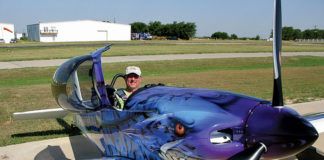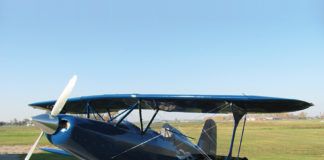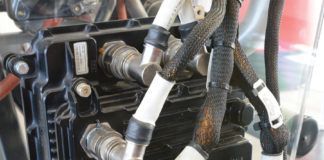You might have heard about airborne near misses in the mainstream media lately and wondered: Is that hype or a real hazard? After all, we in aviation are well aware that it is all but impossible for mainstream media outlets to get an aviation safety story correct. What bothers me most is the spin that pits airlines against private aircraft, with story lines suggesting that the National Airspace System problems are caused by too many of one or the other. It makes for sensational journalism and is easy to dramatize with a still photo of an endless takeoff queue. So I checked into where these reporters were digging up dirt.
They’re Right…Almost
It turns out, to the mainstream medias credit, that they almost have the story correct (sort of like being almost pregnant, right?). Which part is wrong? The U.S. Department of Transportation Bureau of Transportation Statistics shows that near-miss reports have dropped nearly fivefold since 1980, which is as far back as the statistics go. Even the fabled NASA report- National Aviation Operational Monitoring Service (NAOMS) project-that created so much controversy reveals that though there have been TCAS resolutions logged, as well as near-miss incidents, thats not where the real problems are. So the hype about airplanes running into each other in the air over crowded airports is, well, you pick a word. Ill call it inaccurate, because Im polite.
On the other hand, FAA statistics go along with the NASA report in detailing that our collective risk of collision between the ramp and the takeoff roll has jumped back to better than pre-2001 odds, despite the bright new color-coded signs and tarmac marks. Statistics released in the first quarter of 2008 show a 100-incident jump over the previous year regarding runway incursions, not quite doubling the incidents reported. Even flashing lights embedded in the concrete have not been enough of a deterrent for some pilots and ramp vehicle operators. Or is it the controllers in the tower that are having difficulties keeping aircraft out of each others paths this time?
Missed Communication
The NASA report showed an inordinate number of problems on the ground, from issues with flight crew members unable to communicate with air traffic control in a timely fashion because of frequency congestion to missed takeoff clearances, mistakenly assigned takeoff and landing clearances, and even taxi instructions. Communication issues topped the list of serious safety problems, with more than 20,000 incidents listed.
Surprised? Im not. Talk to an air traffic controller working in the U.S. National Airspace System and you quickly learn that all is not well in ATC land. While the FAA is busily churning out press releases touting how they are beefing up re-education on ramp etiquette for pilots and airport vehicle operators, the ATC class of 1980 is signing off the radio frequencies and moving to golf course communities nationwide. The FAAs Oklahoma City air traffic control training facility cannot pump out new recruits fast enough, even with the assistance of universities nationwide that also train young controllers with sophisticated simulation equipment in four-year programs.
A shortage of warm bodies is still not the real problem. With ATC, it turns out, the controller job is not a “train and release” proposition. It takes time (just as with pilots), several years, actually, to create a truly competent controller. Right now we are replacing 20- and 30-year veteran controllers with trainees. Everywhere. Just imagine the fun.
Have you ever visited a TRACON, or even spent a little time up in your local ATC tower? I encourage you to go the extra mile, even endure a background check from TSA or DHS if you must-whatever it takes-but find a way to experience a few hours watching an air traffic controller work. It is eye-opening, and I don’t mean just the view from the tower cab.
A Different Point of View
The first time that I had the opportunity to sit for a few hours behind the tower chief at our local control tower I learned that what I thought was “fly by mouth,” that is, teaching people to fly from the right seat or rear seat of an airplane, was nothing. An air traffic controller told me that, as a certified flight instructor, at least I was right next to the pilot, with a set of dual controls. If the student messed up I could just grab the controls and straighten things out. The controller is left in the cab or behind a screen, watching the disaster unfold, pleading with the errant blip, desperately hoping it will heed his command and planning how to shuffle the ramp, runways or the sky in case the errant blip persists.
It should be no surprise to us that right now, with both ATC and the airlines running as thin-staffed as ever in a system that hums with traffic, we are getting conflicts and communication snafus. Of course, TCAS and TIS take care of the conflicts in the air, the first working for the pilots and controllers and offering climb, descend or turning solutions, while the second at least relays the same traffic information that ATC can see digitally to the pilot, in case the controller is too busy to call the conflict.
The only technology that is proven to help resolve conflicts on the tarmac, however, is yet to be rolled out on a nationwide basis. United Parcel Services fleet of 273 aircraft is equipped with Automatic Dependent Surveillance-Broadcast (ADS-B), and its pilots can see and avoid each other both in the air and on the company’s crowded, dark freight ramps every night. This technology allows the company to integrate merging and spacing algorithms into their flight management systems, creating constant individual descent profiles for arriving aircraft and, as the pilots maneuver, dovetailing them into the stream of evening traffic arriving in 90-second intervals at the company’s Louisville hub. The chatter on the arrival frequencies dies down. The pilots self-separate, with a little help from the avionics, and the thinly staffed junior air traffic controllers on the night shift watch and learn.
ADS-B lowered accident rates among general aviation aircraft in Alaska in the 1990s by some 40%. Airplanes could see not just each other, but also the terrain, via TAWS on the MX 20 equipment that was installed to depict the ADS-B information. They could also receive weather broadcasts in the cockpit, including NEXRAD weather, piggybacked onto the ADS-B signals. The combination of new information available without a subscription through a single technology point showed itself to be a potent safety enhancer, and one that we need more than ever.
Not a problem, because ADS-B is here. The East Coast of the United States is currently blanketed with ADS-B broadcast signal, as are pockets in the Midwest (Louisville, of course). The FAA has finally, in 2007, stated its intention to pursue the technology, and rollouts in the western states are imminent.
Can you and I afford it? If I wanted it hooked into the Grand Rapids Technologies boxes in my RV-10, I could have it today for less than $10,000. Wait until someone other than Garmin builds the receivers, and that number could drop precipitously.
It wont solve controller staffing problems or controller training problems, but ADS-B does offer the potential for allowing pilots to get around ATC and take back responsibility for self-separation. In the meantime, watch your wingtips and read back your clearances out there in the air, and especially on the taxi, where the hazards are anything but hype.













